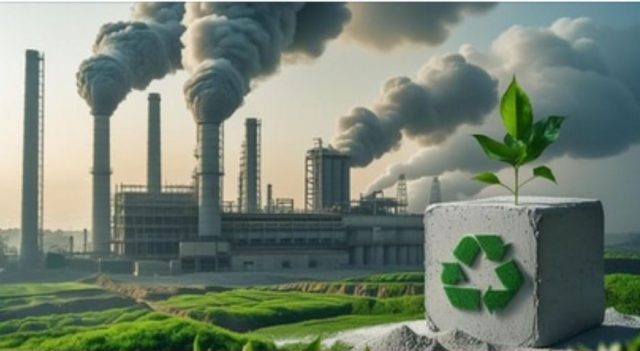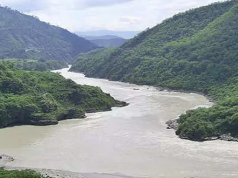Kamrul Islam from Chattogram: The global cement industry is under growing scrutiny—particularly due to its impact on climate change and environmental sustainability. Cement production is responsible for nearly 8 percent of global carbon dioxide emissions, making it the second-largest industrial emitter of CO₂ after the steel sector. This high emission stems mainly from the calcination process of limestone at high temperatures and the heavy reliance on fossil fuels.
Global Shift Towards Green Cement
Over the past decade, many developed countries-including those in the European Union, Canada, and Japan-have embraced the transition towards green cement production. This involves reducing the use of energy-intensive clinker and replacing it with hybrid materials like fly ash, ground granulated blast furnace slag (GGBS), and calcined clay. This approach significantly lowers carbon emissions and also reduces fuel consumption without compromising quality.
One major regulatory step in this shift is the EU’s newly implemented Carbon Border Adjustment Mechanism (CBAM), which mandates carbon emission thresholds for imported goods, including cement. As a result, sustainable production is no longer an option—it is now a survival strategy for cement producers seeking access to international markets.
Bangladesh: Progressing Slowly but Steadily
Bangladesh’s cement industry has seen remarkable growth over the past three decades, with an estimated annual production capacity exceeding 80 million tonnes. However, most factories still rely heavily on high-clinker formulations and fossil fuel-based energy systems such as coal and petcoke.
Encouragingly, a few major players have started shifting toward eco-friendly practices. Some leading companies have already begun producing blended cement using slag or fly ash as partial replacements for clinker. Additionally, there are experimental uses of Refuse-Derived Fuel (RDF)—an alternative energy source made from waste—in select plants, indicating a gradual reduction in fossil fuel dependence.
Policy Backing: A Critical Prerequisite
Experts believe that government policy support is essential to accelerate the green transformation of the cement sector in Bangladesh. Incentives such as tax breaks, technology transfer support, and funding for industrial research can encourage wider adoption of sustainable technologies.
In the context of CBAM and global trade, cement exporters from Bangladesh must develop systems for carbon accounting, emission control, and increased reliance on renewable energy. Without this transformation, the country’s cement industry risks losing its competitive edge in international markets.
The Road Ahead
Green cement production is not merely a technological upgrade-it is an environmental and economic responsibility. If Bangladesh can navigate this transition successfully, it will not only enhance its global competitiveness but also play a vital role in addressing the country’s climate vulnerability. A collaborative effort among industry leaders, policymakers, researchers, and environmentalists is now more urgent than ever.











